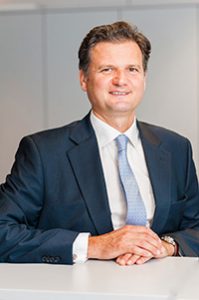Views from ...
Conclusions following FORATOM’s #NuclearEurope2021 conference
Yves Desbazeille, FORATOM Director General
 In June, FORATOM organised its annual conference #NuclearEurope2021 entitled “Nuclear at a crossroads: Where to next?”. This year it was a virtual event. During the conference, high-level speakers from all over the world discussed a range of different topics related to nuclear energy at EU level with a focus on two main topics: public opinion towards nuclear and the role which nuclear energy can play in 2050. The debates and interventions were very fruitful.
In June, FORATOM organised its annual conference #NuclearEurope2021 entitled “Nuclear at a crossroads: Where to next?”. This year it was a virtual event. During the conference, high-level speakers from all over the world discussed a range of different topics related to nuclear energy at EU level with a focus on two main topics: public opinion towards nuclear and the role which nuclear energy can play in 2050. The debates and interventions were very fruitful.
Taking this opportunity, I would like to share with you my thoughts on these two important topics.
Firstly, it must be underlined that climate change is happening now and this is a major threat. Its course will be very difficult to reverse, unless stringent and urgent countermeasures are implemented. In my view, it is clear that we need all solutions, and we need them now. Given that, we no longer have the time to continue debating “nuclear versus renewables”. We need them both!
Secondly, there is still a significant gap between the reality of what nuclear energy is and how it is perceived by the general public. During the conference, we heard that when the debate takes place in an open and transparent manner with fact-based arguments, the perception of nuclear can improve significantly.
A lot of attention was also given to current EU policies and their possible impact on nuclear energy.
Nuclear has an excellent track-record in the EU in terms of decreasing CO2 emissions and ensuring secure, affordable electricity for all citizens. It is an energy source that has been massively and successfully deployed over the last 40 years and its benefits should be acknowledged properly in EU policies. This is the reason why much more should be done to preserve the existing fleet as long as technical and safety conditions are met.
FORATOM’s analysis shows that the long-term operation of nuclear reactors can support most of the additional efforts needed to reach the EU’s new -55% emission reduction objective. The same is true for hydrogen production up to 2030.
All of this will not be possible without a stable investment environment for our industry – nuclear has been recognised as sustainable by the JRC and therefore must be included under the taxonomy. The need to at least maintain the current nuclear share has to be recognized and embedded in the EU policies.
In order to ensure that nuclear energy will maintain its role in the EU’s energy mix for the years to come, there are some hurdles at EU level that need to be overcome:
- Risk of betting too much on emerging technologies that have yet to prove their ability to be scaled-up at a reasonable cost and within a reasonable timeframe.
- Risk of shifting from dependence on fossil fuel to raw material imports (as massive amounts of raw materials and rare earths will need to be imported from outside Europe).
- Risk of not paying enough attention to lock-in effects that some “transitional” solutions may imply.
- Risk of underestimating the socio-economic impacts of the energy transition.
These risks, although very real, are usually not properly taken into account nor even understood by EU decision makers, because they do not fit within the EU’s current narrative.
In my view, keeping the nuclear option fully on the table will help to prevent and mitigate these risks. This is why we have to invest in IRD, new designs, new projects, prepare the next generation to take over and ensure that nuclear energy is fully recognised for the benefits it brings.
